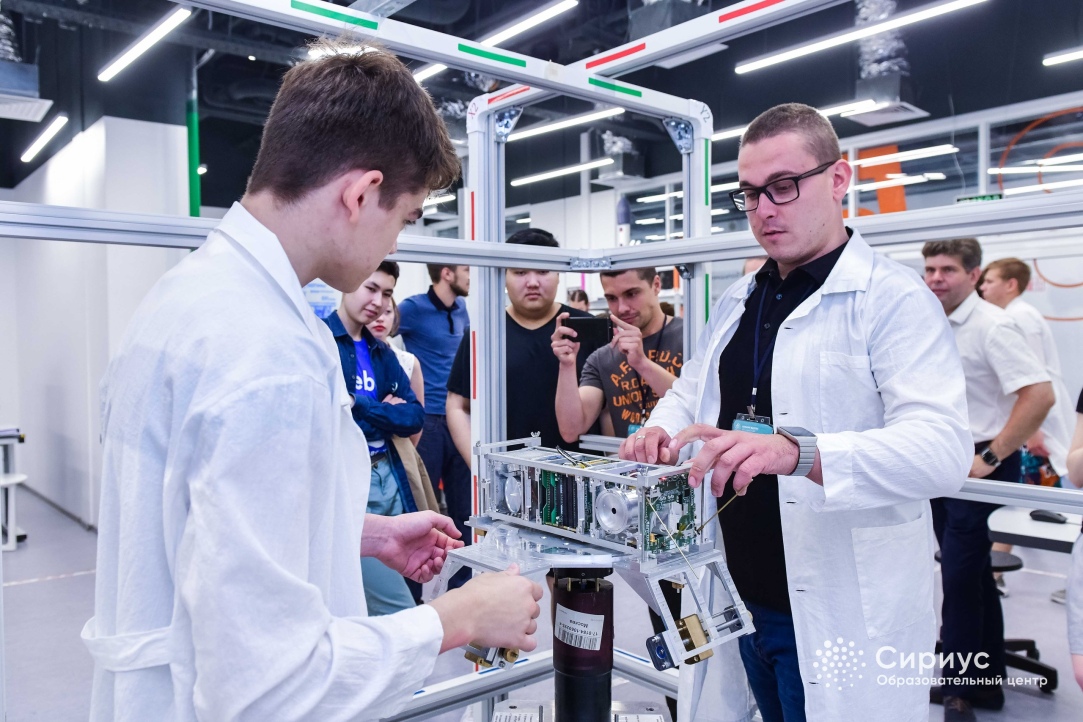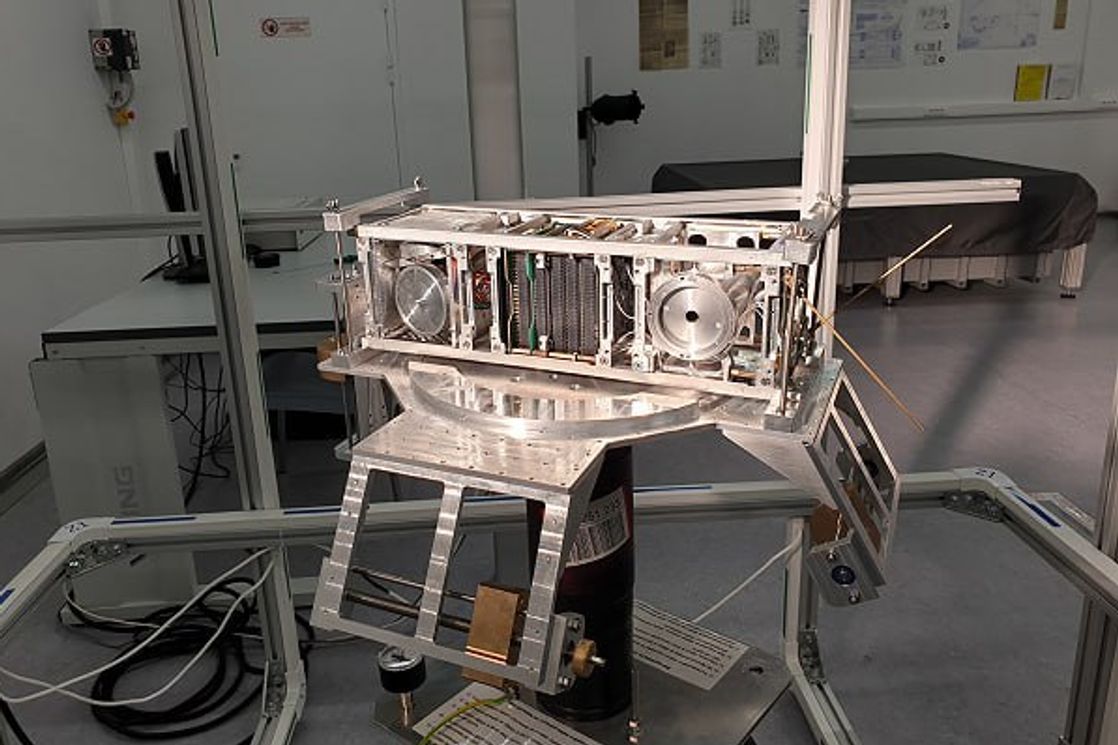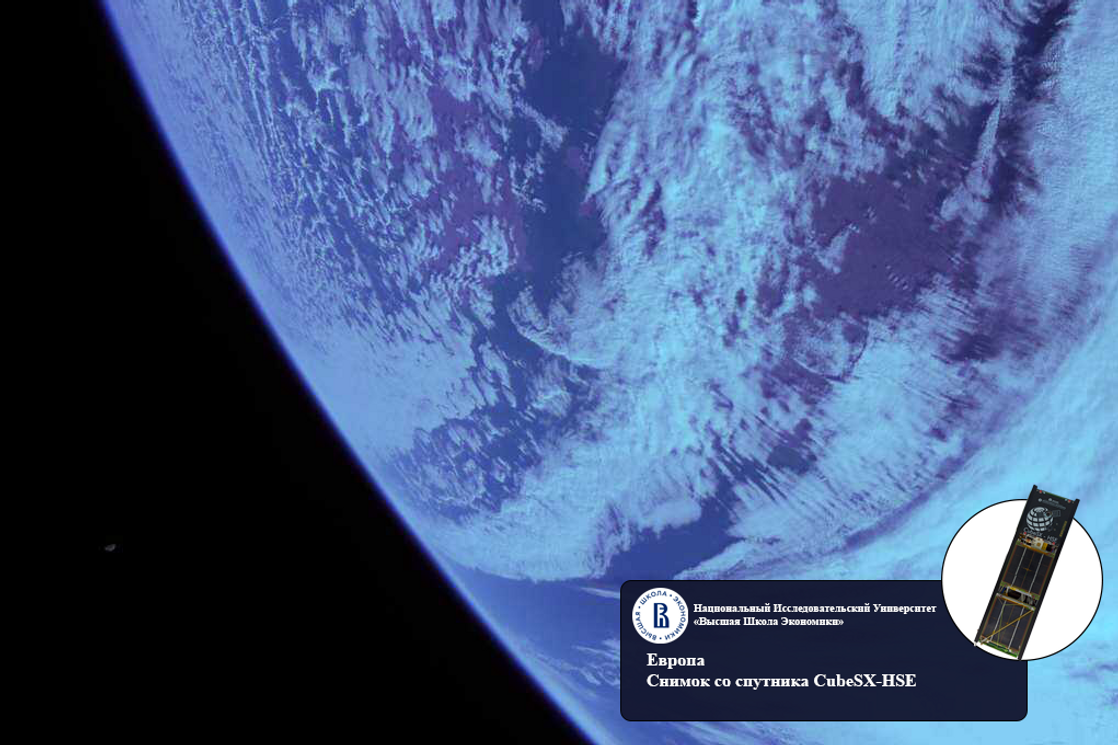HSE University Satellites: Three Years in Orbit

In March 2024, HSE University celebrated an important milestone — the third anniversary of the successful operation in orbit of its first CubeSX-HSE and CubeSX-Sirius-HSE satellites. These spacecraft, created on the basis of the CubeSat platform for Earth observation, continue to function actively, confirming high technological standards and reliability of the university's developments.
Over the past years, the satellites have taken more than 300 high-quality images of the Earth, which has allowed the scientists to conduct in-depth research in various fields—from ecology to climate change monitoring.
The HSE University Laboratory of Space Vehicles and System’s Functional Safety is engaged in satellite maintenance. The HSE Mission Control Centre monitors the work of cube sats and improves the skills of students and staff who participate in this process. Thanks to the project, MIEM students gain valuable experience in space technology. Using data collected by satellites, HSE students and staff have published more than 15 scientific papers, making a significant contribution to the development of the academic community.

In addition to the successful work of CubeSX-HSE and CubeSX-Sirius-HSE, HSE University has also developed its space project by launching new satellites—CubeSX-HSE-2 and CubeSX-HSE-3. These additional spacecraft are equipped with automatic vessel identification systems (AIS) and an automatic dependent surveillance–broadcast (ADS-B). They were launched later and also successfully perform their functions in orbit, collecting data for research, including the area of the Northern Sea Route, which is essential for the Russian Arctic industry.

The three-year operation of the CubeSX-HSE and CubeSX-Sirius-HSE satellites proves the importance and success of the university’s space programme, while the launches of CubeSX-HSE-2 and CubeSX-HSE-3 indicate the strengthening position of HSE University as a leading educational and research centre in space technologies.

Andrey Abrameshin, Deputy Director of the HSE MIEM
In the three years since the launch of the first satellites, the Laboratory of Space Vehicles and System’s Functional Safety has made huge progress. Today, we operate four satellites in orbit; the laboratory has a unique infrastructure, including the Mission Control Centre, for organising ongoing communication and data transmission channels. Every day, our students learn to develop payloads for small spacecraft, create the software, and conduct functional tests.
We keep going forward. Currently, we are preparing to launch a small spacecraft with a payload in the form of solar panels made of perovskite or polymer photoconverters in order to conduct field studies of their photovoltaic characteristics in near space conditions in low Earth orbit. We hope that the results we get will significantly increase the duration of spacecraft active operation. The new satellite will be equipped with blockchain technology, allowing us to collect big data directly on satellite systems.
See also:
‘We Control the Flight of Small Spacecraft’: How HSE University Launches Satellites
Following the meeting with participants of the 3rd Young Scientists Congress, Russian President Vladimir Putin assigned the government to include the creation and launch of small spacecraft in a new national project. Universities will also be involved in the project. Dmitrii Abrameshin, Head of the Mission Control Centre at the Moscow Institute of Electronics and Mathematics at HSE University, spoke about the mechanism of small satellites and which satellites have already been launched by HSE University.
The Path to the Stars: How HSE University Launches Satellites and Gathers Talent
The CubeSX-HSE-3 satellite, created by staff and students of HSE MIEM and based on the OrbiCraft-Pro 3U platform developed by the SPUTNIX private space company, was launched into low-Earth orbit in June. It is the third research vehicle developed at HSE University as part of the SPACE-π project. The HSE University team plans to launch another spacecraft in December 2023 and in the future, it plans to launch two CubeSats into orbit per year. In a special report for the HSE News Service, HSE University’s Project and Educational Laboratory of Economic Journalism explains what HSE University’s satellites do in space and what kind of work goes into them on Earth.
HSE University’s Third Satellite Launched from Vostochny Cosmodrome
The small CubeSX-HSE-3 spacecraft was created by students and staff of the HSE Tikhonov Moscow Institute of Electronics and Mathematics. It is based on the OrbiCraft-Pro 3U platform by Sputnix. The work was carried out as part of the Space-π project with support from the Innovation Support Fund.
In Space with MIEM: All Systems Go!
On April 12th, the traditional Big Space Break took place at the HSE MIEM. This interactive event for students and staff was organized by specialists from the Laboratory of Space Vehicles and Systems' Functional Safety.
HSE University’s First Satellite Travels 478.7 Million km
The satellite entered orbit two years ago. The launch of the Soyuz-2.1a rocket with a Fregat upper stage and 38 satellites on board, including CubeSX-HSE, took place on March 22, 2021 at the Baikonur Cosmodrome.
Second HSE University Satellite Launched from Baikonur
On August 9, a Soyuz 2.1b rocket launched with a payload of HSE University’s second satellite, which will monitor the land surface of the Arctic region. HSE MIEM Deputy Director Andrey Abrameshin spoke about the university’s space plans, while Top Class competition winner Alexey Gilenko shared his impressions of the launch at Baikonur Cosmodrome.
HSE University Is Preparing to Launch its Second Satellite into Space
Only one year ago, the first HSE University satellite, developed by specialists and students from the Laboratory of Space Vehicles and Systems’ Functional Safety of the HSE Tikhonov Moscow Institute of Electronics and Mathematics (MIEM HSE) and the Sputnix space company, was launched into orbit. And now, the date of the second HSE University’s satellite launch has been announced: Roscosmos will send it into space from Baikonur Cosmodrome on August 9th, 2022.
'Our Work Will Be Useful in the Search for Earth Twins’
Why is space so fascinating? Who is hindered by the Earth's geocorona? What personal qualities are essential for a research physicist, and how will academic careers regain their prestige? These were the questions that came up in HSE News Service’s interview of Igor Balyukin, a Senior Lecturer of the HSE Faculty of Physics and the winner of the 'Best Work Performed by Young Scientists' nomination category of the RAS Space Research Institute competition.
Dust Cloud around the Moon
HSE researchers, together with colleagues from Space Research Institute of RAS, MIPT, and the University of Colorado, ventured to find out where the plasma-dust cloud around the Moon comes from. To do this, they compared theoretical calculations with experimental data and theorized that this cloud likely consists of matter that rose from the Moon’s surface as a result of meteoroid collisions.


